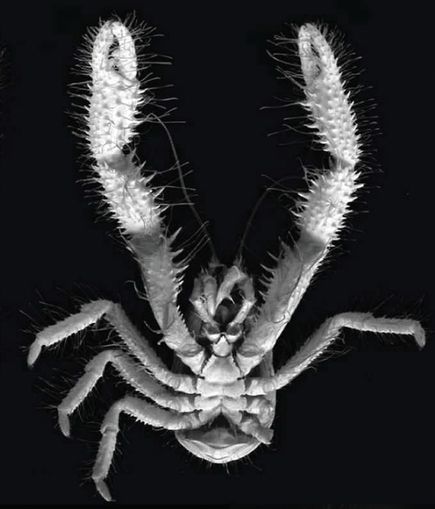The “Yeti” crab. A crustacean who gets its nickname from its long and shaggy arms which are said to resemble those of the infamous abominable beast. For awhile now, marine biologists have been puzzled as to why the “Yeti” crab would sway its arms in a slow and rhythmic manner from side to side. It turns out the crabs constantly perform this shuffle, not because of a mating ritual, but because they actually “farm” bacteria on their arms to use as nourishment.
Goes to show you why crustaceans have survived for so, so long. Go evolution!
3 commentsFull article: NatGeo
The “yeti” crab farms bacteria on its furry arms as its main source of food, scientists say.
The crabs—a family of crustaceans with long, shaggy arms that resemble the mythical yeti, or abominable snowman—were discovered only in 2005.
The first known species of these blind white crabs, Kiwa hirsuta, were found near boiling-hot hydrothermal vents roughly 7,500 feet (2,300 meters) deep. The vents are located on the floor of the South Pacific some 900 miles (1,500 kilometers) south of Easter Island (map). (See picture: “‘Yeti Crab’ Discovered in Deep Pacific.”)
In 2006 scientists uncovered another species of yeti crab, K. puravida, living in cold, methane-seeping fissures about 3,300 feet (1,000 meters) deep near Costa Rica.
K. puravida regularly waved its claws slowly and rhythmically, puzzling scientists.
“When I first saw it, ‘baffled’ would be a good word for how I felt,” said study co-author Andrew Thurber, a biological oceanographer at Oregon State University in Corvallis.
One early explanation for the behavior was that the crabs were trying to keep others at a distance.





